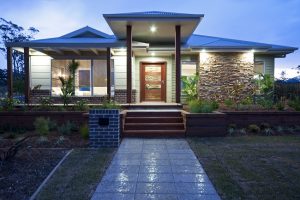9 Important Home Building Trends for 2016 and Beyond
Guest post by Andre Smith

Are you wondering where home buying trends are headed now that the first quarter of 2016 is well behind us?
We’ve put some brainpower into analysing the current home buying market, and put together a trend forecast with our thoughts on what the next big things will be as we finish out 2016 and head into 2017.
These are our predictions for 9 of the most important home building trends for 2016 and beyond.
1. Increased Demand for New Homes Will Create Growth for the Home Building Industry in Australia
According to the Department of Planning and Environment website, the Australian government plans to focus significant attention on meeting housing demands created by projected future population growth.
They anticipate that more than half a million additional homes will be necessary to accommodate the growing population over the next 20 years.
The vast majority of this housing will be new homes, and the home building industry in Australia is poised for outstanding growth opportunities.
2. New Housing Developments Will Increase the Population Density in Existing Cities
The Department of Planning and Environment has communicated plans to create increased housing inventory closer to jobs.
As one of Australia’s thriving economic centres, Sydney is poised to be one of the main beneficiaries of the upcoming housing boom.
3. Demand for New Homes Will Be Strongest Near Airports and Transportation Hubs
With the Australian government’s stated plans to focus on strengthening economic development around transportation gateways and strategic centres, we can infer that populations and development projects will naturally gravitate to these areas.
Look for new development opportunities around Sydney Airport, Port Botany and Badgery’s Creek Airport.
At the Forbes.com website, author Wade Shepard makes a good case for the lucrative investment potential of airport-accessible real estate in an article called ‘Why You Should Want to Live Right Next to an Airport‘.
4. Interest in Home Building Franchises Will Increase
Along with the increased demand for new housing, there’s opportunity for a proliferation of new home builders.
However, home buyers will be looking to work with trusted builders who already have a reputation for building high-value homes, for example GJ Gardner Homes in Point Cook.
The solution is obvious; everyone wins when franchise relationships arise between existing home builders and new business owners.
5. Designers Will Get Increasingly Creative In Designing Homes For Small And Oddly-Shaped Lots
They aren’t making any more land, so it’s getting increasingly more important to make use of the real estate parcels that are still available.
Small and odd-sized lots that home builders once shunned are now getting snapped up for future development.
6. Demand For Demolition Services Will Increase
Along the same lines, we’re seeing an increase in homeowners who wish to demolish their existing homes and rebuild new ones on the same block rather than relocate.
7. First-Time Home Buyers Will Face Challenges
Real estate prices in Sydney are soaring, with most of the available land being priced well out of reach for first-time home buyers.
There has also been a reduction in funding through the First Home Owner’s Grant, which also adds to the challenge.
8. Demand For Multi-Generational Housing Will Remain Strong
With the population aging, and housing becoming increasingly out of reach for young people, mother-in- law suites, attic bedrooms and other multi-generational housing units are in high demand.
9. The Market Is Shifting in Search of Alternative Building Materials
Between the high costs for brick and the high costs of labour for employing bricklayers, many home builders are seeking lower cost building materials.
Now you’re updated on 9 of the most important current home building trends for 2016.
We hope this information will help you make educated decisions when planning any future real estate investments.
I think it is great that people are starting to use and get creative with oddly-shaped lots. It is kind of surprising what you can do with them. I actually read an article online about some of these types of buildings. the one that stuck out to me was a guy who built his house in a small alley between two high-rises. His house was understandably really long and narrow. It looked nice, but I don’t know if I could manage to live there. Still, I do applaud people for using the small oddly-shaped parcels like this.